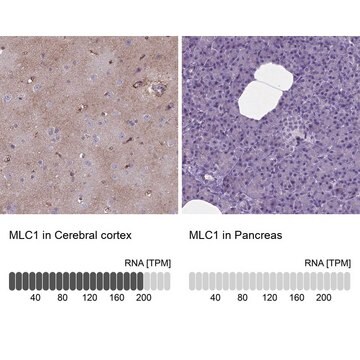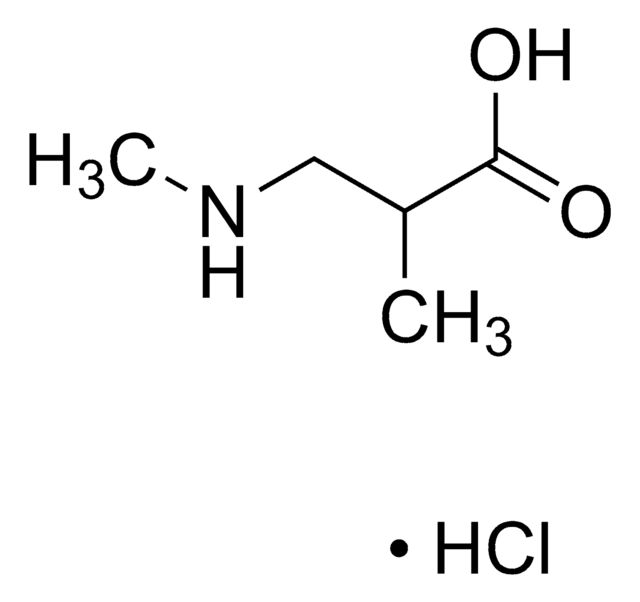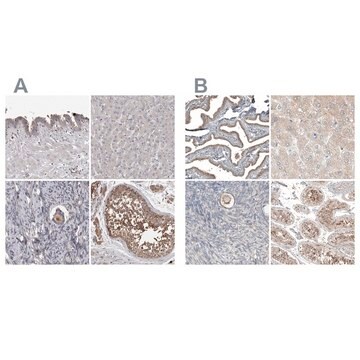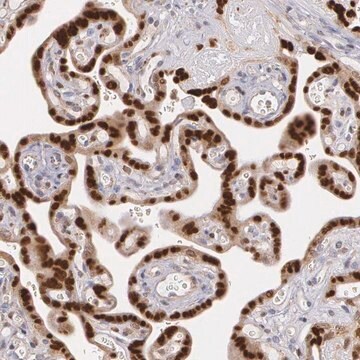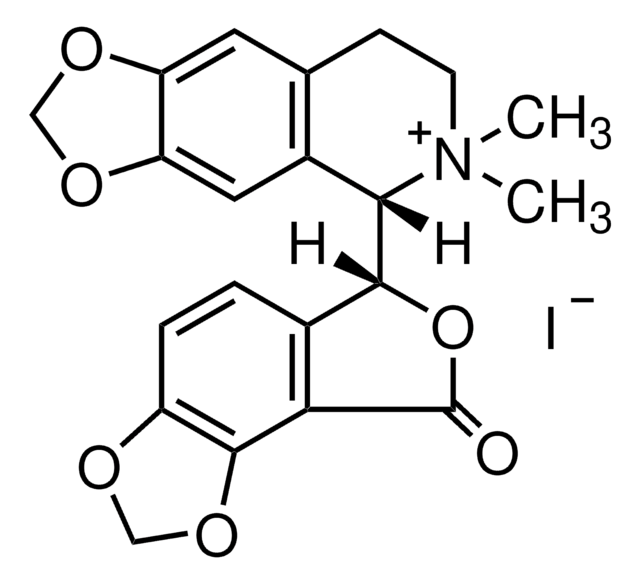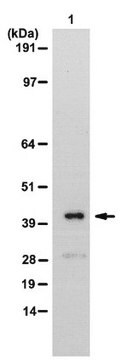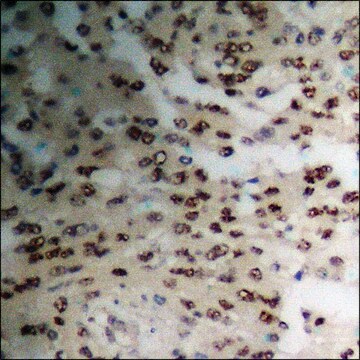MABS2319
Anti-MLC1 Antibody, clone XB6-AC5
Synonim(y):
Membrane protein MLC1
About This Item
Polecane produkty
pochodzenie biologiczne
mouse
Poziom jakości
forma przeciwciała
purified antibody
rodzaj przeciwciała
primary antibodies
klon
XB6-AC5, monoclonal
masa cząsteczkowa
calculated mol wt 41.6 kDa
observed mol wt ~32 kDa
oczyszczone przez
using protein G
reaktywność gatunkowa
mouse, rat
opakowanie
antibody small pack of 100
metody
immunocytochemistry: suitable
immunofluorescence: suitable
immunohistochemistry: suitable
immunoprecipitation (IP): suitable
western blot: suitable
izotyp
IgG1κ
sekwencja epitopowa
N-terminal
numer dostępu Protein ID
numer dostępu UniProt
temp. przechowywania
2-8°C
informacje o genach
mouse ... Mlc1(170790)
Specyficzność
Immunogen
Zastosowanie
Evaluated by Western Blotting in wild-type Mouse brain membrane extract.
Western Blotting Analysis: A 1:1,000 dilution of this antibody detected MLC1 in Wild-type Mouse brain membrane extract, but not in extract from Mouse membrane with MLC1 knockout.
Tested Applications
Immunohistochemistry: A representative lot detected MLC1 in Immunohistochemistry applications (Diaz-Castro, B., et al. (2019). Sci Transl Med. 11(514):eaaw8546; Gilbert, A., et al. (2019). Brain Struct Funct. 224(3):1267-1278; Sanchez, A., et al. (2020). Neurotherapeutics. 17(4):2041-2053).
Immunoprecipitation Analysis: Applications: A representative lot detected MLC1 in Immunohistochemistry applications (Elorza-Vidal, X., et al. (2018). Neurobiol Dis. 119:88-99).
Immunofluorescence Analysis (IF): A representative lot detected MLC1 in Immunofluorescence applications (Sirisi, S., et al. (2017). Hum Mol Genet.;26(13) 2436-2450; Elorza-Vidal, X., et al. (2018). Neurobiol Dis. 119:88-99; Perez-Rius, C., et al. (2019). Orphanet J Rare Dis. 14(1):268; Sanchez, A., et al. (2020). Neurotherapeutics. 17(4):2041-2053).
Immunocytochemistry Analysis: A representative lot detected MLC1 in Immunocytochemistry applications (Sirisi, S., et al. (2017). Hum Mol Genet. 26(13):2436-2450; Elorza-Vidal, X., et al. (2018). Neurobiol Dis. 119:88-99).
Western Blotting Analysis: A representative lot detected MLC1 in Western Blotting applications (Sirisi, S., et al. (2017). Hum Mol Genet. 26(13):2436-2450; Elorza-Vidal, X., et al. (2018). Neurobiol Dis. 119:88-99; Gilbert, A., et al. (2019). Brain Struct Funct. 224(3):1267-1278; Perez-Rius, C., et al. (2019). Orphanet J Rare Dis. 14(1):268; Sanchez, A., et al. (2020). Neurotherapeutics. 17(4):2041-2053).
Note: Actual optimal working dilutions must be determined by end user as specimens, and experimental conditions may vary with the end user.
Opis wartości docelowych
Postać fizyczna
Rekonstytucja
Przechowywanie i stabilność
Inne uwagi
Oświadczenie o zrzeczeniu się odpowiedzialności
Nie możesz znaleźć właściwego produktu?
Wypróbuj nasz Narzędzie selektora produktów.
Certyfikaty analizy (CoA)
Poszukaj Certyfikaty analizy (CoA), wpisując numer partii/serii produktów. Numery serii i partii można znaleźć na etykiecie produktu po słowach „seria” lub „partia”.
Masz już ten produkt?
Dokumenty związane z niedawno zakupionymi produktami zostały zamieszczone w Bibliotece dokumentów.
Nasz zespół naukowców ma doświadczenie we wszystkich obszarach badań, w tym w naukach przyrodniczych, materiałoznawstwie, syntezie chemicznej, chromatografii, analityce i wielu innych dziedzinach.
Skontaktuj się z zespołem ds. pomocy technicznej